Decoding the Color of Your Poop: A Comprehensive Guide to Mucus and Other Stool Concerns
What do different poop colors mean? Explore the significance of green, yellow, white, black, red, and orange stools. Understand when to seek medical attention for changes in stool color and consistency. Get answers to your questions about mucus in stool and other digestive health concerns.
Unraveling the Mystery of Poop Color
Poop color is a fascinating indicator of our overall health, reflecting the intricate workings of our digestive system. While normal poop is typically brown, variations in hue can hold valuable clues about our well-being. In this comprehensive guide, we’ll delve into the meaning behind different poop colors, exploring the potential causes and when to seek medical attention.
The Spectrum of Poop Colors: What They Reveal
The color of our stool can range from vibrant green to pale white, each shade carrying its own significance. Let’s examine the various poop colors and their potential causes:

Green Poop: A Colorful Surprise
Green poop is often the result of a diet rich in green vegetables, such as spinach or kale, or the consumption of green food coloring. However, it can also indicate that your meal moved through your gut too quickly, preventing the bile from fully breaking down.
Yellow Poop: A Sign of Digestive Woes?
Yellow poop is common, especially in breastfed babies. But if your stool is greasy, foul-smelling, and consistently yellow, it may be a sign of improper fat digestion, potentially due to a condition like celiac disease.
White, Pale, or Clay-Colored Poop: A Cause for Concern?
Pale or white poop can be a red flag, as it may indicate a lack of bile in the stool, which can be a symptom of liver disease or a blockage in the bile ducts. Medications like Kaopectate or Pepto-Bismol can also cause this color change.
Dark as Night: The Mystery of Black Poop
While black licorice, blueberries, and iron supplements can turn your stool dark, black, tarry poop may signal bleeding in the upper digestive tract, requiring immediate medical attention.

Seeing Red: Uncovering the Causes of Reddish Poop
Red or reddish poop can be alarming, but it’s often the result of consuming beets, tomato soup, or red-colored drinks. However, if the red color is not diet-related, it could indicate the presence of blood, which warrants a prompt visit to the doctor.
Orange You Wondering About Orange Poop?
Orange poop is less common, but it can occur due to a diet rich in carrots or other orange-colored foods. In some cases, it may also be a sign of a problem with bile production or flow.
Mucus in Stool: A Cause for Concern?
Noticing mucus in your stool can be unsettling, but it’s not always a cause for alarm. Mucus is a natural lubricant produced by the lining of the intestines, and it can sometimes be present in small amounts in the stool. However, if you notice an unusual amount of mucus or if it’s accompanied by other symptoms, it’s important to consult with your healthcare provider.
When Should You Seek Medical Attention?
If you experience persistent changes in the color or consistency of your stool, or if you notice the presence of mucus, blood, or other concerning signs, it’s crucial to seek medical attention. Your healthcare provider can help determine the underlying cause and provide appropriate treatment.

Maintaining Digestive Health: Proactive Steps
While changes in poop color and the presence of mucus can be disconcerting, it’s important to remember that many of these variations are normal and related to our dietary choices. By paying attention to your bowel habits and seeking medical advice when necessary, you can take proactive steps to maintain your digestive health and address any underlying concerns.
Embracing the Diversity of Poop: A Holistic Approach
Poop color and consistency can be a fascinating window into our overall well-being. By understanding the various hues and their potential meanings, we can gain valuable insights into our digestive health and take appropriate actions to address any concerns. Remember, maintaining open communication with your healthcare provider is key to ensuring optimal digestive function and overall well-being.
What Do Different Poop Colors Mean?
Written by Hope Cristol
- What Do Different Stool Colors Mean?
- Normal Poop Color
- Green Poop
- Yellow Poop
- White, Pale, or Clay-Colored Poop
- Black Poop
- Red or Reddish Poop
- Orange Poop
- When to Get Help for Poop Color Changes
- More
Different stool colors can mean different things, mostly depending on what you’ve eaten.
You’d probably notice if your poop is a different hue than normal. But what does it mean if it’s green? What about red, yellow, white, or black? Or orange?
Most of the time, minor changes in the color of your waste are due to diet. After all, we don’t eat the same thing at every meal, every day. But sometimes a color change can signal a minor health issue. In rare cases, it means something serious is wrong in your digestive system.
If the color you see before you flush worries you, call your doctor.
Poop is normally brown. The color is the result of what you eat and how much bile is in your stool.
The color is the result of what you eat and how much bile is in your stool.
Bile is a fluid your liver makes to digest fats. It starts out as a yellowish green color. But as the pigments that give bile its color travel through your digestive system, they go through chemical changes and turn brown.
Your poop can sometimes have a slightly greenish hue, or even be a more vivid green. Most of the time, green or greenish poop is normal.
Is your diet causing green poop?
Think back on what you’ve been eating. These foods and supplements can cause your poop to be green:
- Green veggies, like spinach or kale
- Green food coloring, such as in drink mixes or ice pops
- Iron supplements
Other causes of green poop
If you have green diarrhea, the color of your food may not be to blame. It’s likely that your meal moved through your gut too quickly, so the fat-digesting bile didn’t have time to turn brown.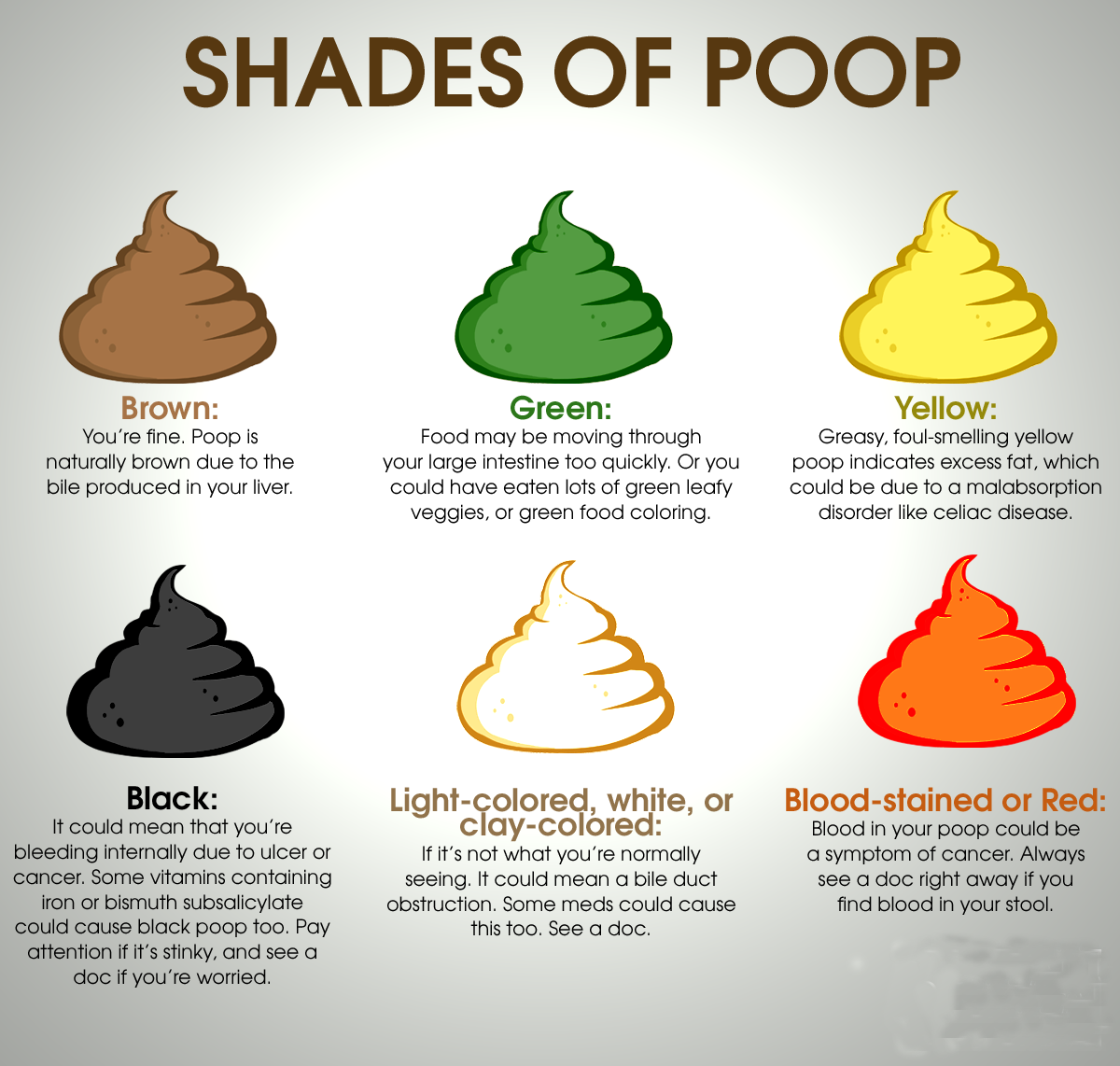
There may be times when your poop looks more yellow than brown.
This shade is also normal for many people. It’s common for babies, especially those who breastfeed. But if you have yellow poop that looks greasy and smells very bad, it may have too much fat. That could be a sign your body isn’t digesting food properly.
Is your diet causing yellow poop?
Indirectly, your diet could cause yellow poop. If you have celiac disease, your body can’t handle a protein called gluten, which is in wheat, barley, and rye. If you have the condition and eat foods that have gluten, like many breads, pastas, and cookies, your intestines won’t work as they should. So, if you’re eating those foods, and your poop is yellow, it may be time to see a doctor.
Other causes of yellow poop
There may be other causes of yellow poop that’s greasy and smelly. If it happens to you often, tell your doctor.
Sometimes, poop may not have much color at all.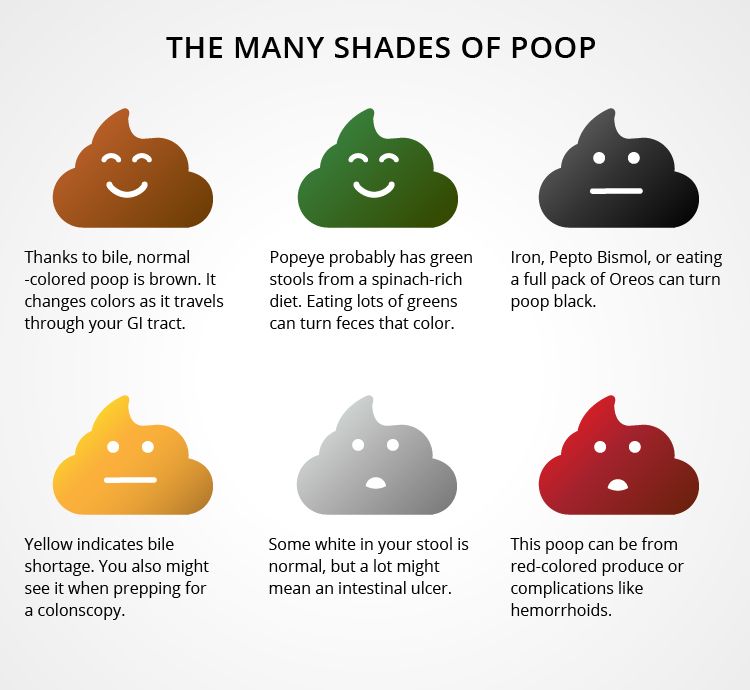
Is your diet causing pale poop?
If your poop is pale, it’s not likely directly due to a food. But medicines for diarrhea like bismuth subsalicylate (Kaopectate, Pepto-Bismol) can sometimes cause pale or clay-colored poop. So can barium, a chalky liquid you drink before you get X-rays of the upper part of your digestive tract.
Other causes of pale poop
A more serious cause is a lack of bile in your stool. (Remember, bile gives poop its brown color.) Your body makes bile in the liver, stores it in the gallbladder, and releases it into your small intestine to help digest your food. If there’s not enough of it to give your poop its typical brown color, it could be a sign of a problem along the way.
Liver disease, such as hepatitis, can keep bile from getting into your body waste. So can a blockage in the tubes (called ducts) that carry bile. This can happen because of:
- Gallstones
- A tumor
- A condition you’re born with called biliary atresia
Babies’ poop is black for the first few days after they’re born. Otherwise, it may be because you ate something very dark-colored or took a medicine or supplement that causes black poop. But this color can be a sign of a more serious problem: bleeding in the upper part of your digestive tract.
Otherwise, it may be because you ate something very dark-colored or took a medicine or supplement that causes black poop. But this color can be a sign of a more serious problem: bleeding in the upper part of your digestive tract.
Is your diet causing black poop?
Foods and supplements that turn poop black include:
- Black licorice
- Blueberries
- Iron supplements
Medicines that have bismuth subsalicylate (Kaopectate, Pepto-Bismol) can also cause very dark stools.
Other causes of black poop
Poop that looks like tar is often a sign of bleeding in the digestive tract. Some causes include:
- Bleeding from stomach ulcers
- Bleeding sores in your esophagus from acid reflux
- Bleeding from noncancerous tumors in the upper GI tract
- Cancer
If you don’t think black poop came from what you ate, you need to talk to your doctor.
If you see red or reddish poop in the toilet, don’t be alarmed right away.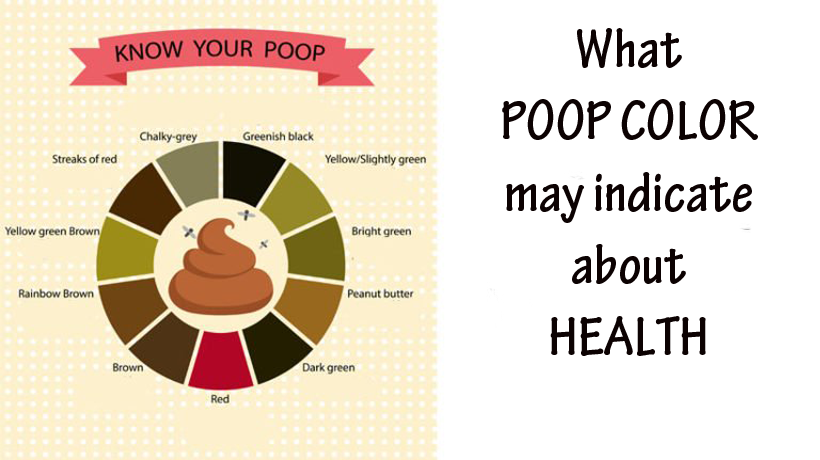 First ask yourself if you’ve had red foods lately.
First ask yourself if you’ve had red foods lately.
Is your diet causing red or reddish poop?
Several foods can change the color of your stool to a pink or reddish color:
- Beets
- Tomato soup
- Gelatin dessert
- Red drinks
Other causes of red or reddish poop
If you don’t think your diet is the cause, the red you see may be blood. And if it’s bright red, the blood likely comes from the lower part of your digestive tract. Common causes include:
- Noncancerous tumors
- Cancer
- Inflammation in the colon, called colitis
- Growths called polyps in your colon
- Conditions caused by small sacs in the wall of the colon, called diverticular disease
- Hemorrhoids
Call your doctor if you see red that’s probably not from food you ate.
Poop can often come out the color of the food that went in, especially if you have diarrhea. If your poop has an orange hue, it’s most likely due to some orange foods.
Is your diet causing orange poop?
Foods that have beta-carotene can turn your poop orange, such as:
- Carrots
- Winter squash
- Pumpkin
- Sweet potatoes
Foods with orange coloring, such as sodas, candy, or gelatin dessert, can also give your poop an orange color.
Also, antibiotics and antacids that have aluminum hydroxide in them can make your stool orange.
Other causes of orange poop
Rarely, poop can be orange if you have a problem with your liver that causes it to make less bile than normal, or a blockage that keeps bile from leaving the liver and entering your system. But usually, if this is the case, your poop will be pale or clay-colored.
Most of the time, poop that’s a different color from what you’re used to isn’t something to worry about. It’s rare for it to be a sign of a serious condition in your digestive system. But if it’s white, bright red, or black, and you don’t think it’s from something you ate, call your doctor.
Top Picks
What Do Different Poop Colors Mean?
Written by Hope Cristol
- What Do Different Stool Colors Mean?
- Normal Poop Color
- Green Poop
- Yellow Poop
- White, Pale, or Clay-Colored Poop
- Black Poop
- Red or Reddish Poop
- Orange Poop
- When to Get Help for Poop Color Changes
- More
Different stool colors can mean different things, mostly depending on what you’ve eaten.
You’d probably notice if your poop is a different hue than normal. But what does it mean if it’s green? What about red, yellow, white, or black? Or orange?
Most of the time, minor changes in the color of your waste are due to diet. After all, we don’t eat the same thing at every meal, every day. But sometimes a color change can signal a minor health issue. In rare cases, it means something serious is wrong in your digestive system.
If the color you see before you flush worries you, call your doctor.
Poop is normally brown. The color is the result of what you eat and how much bile is in your stool.
Bile is a fluid your liver makes to digest fats. It starts out as a yellowish green color. But as the pigments that give bile its color travel through your digestive system, they go through chemical changes and turn brown.
Your poop can sometimes have a slightly greenish hue, or even be a more vivid green. Most of the time, green or greenish poop is normal.
Is your diet causing green poop?
Think back on what you’ve been eating. These foods and supplements can cause your poop to be green:
- Green veggies, like spinach or kale
- Green food coloring, such as in drink mixes or ice pops
- Iron supplements
Other causes of green poop
If you have green diarrhea, the color of your food may not be to blame. It’s likely that your meal moved through your gut too quickly, so the fat-digesting bile didn’t have time to turn brown.
There may be times when your poop looks more yellow than brown.
This shade is also normal for many people. It’s common for babies, especially those who breastfeed. But if you have yellow poop that looks greasy and smells very bad, it may have too much fat. That could be a sign your body isn’t digesting food properly.
Is your diet causing yellow poop?
Indirectly, your diet could cause yellow poop. If you have celiac disease, your body can’t handle a protein called gluten, which is in wheat, barley, and rye.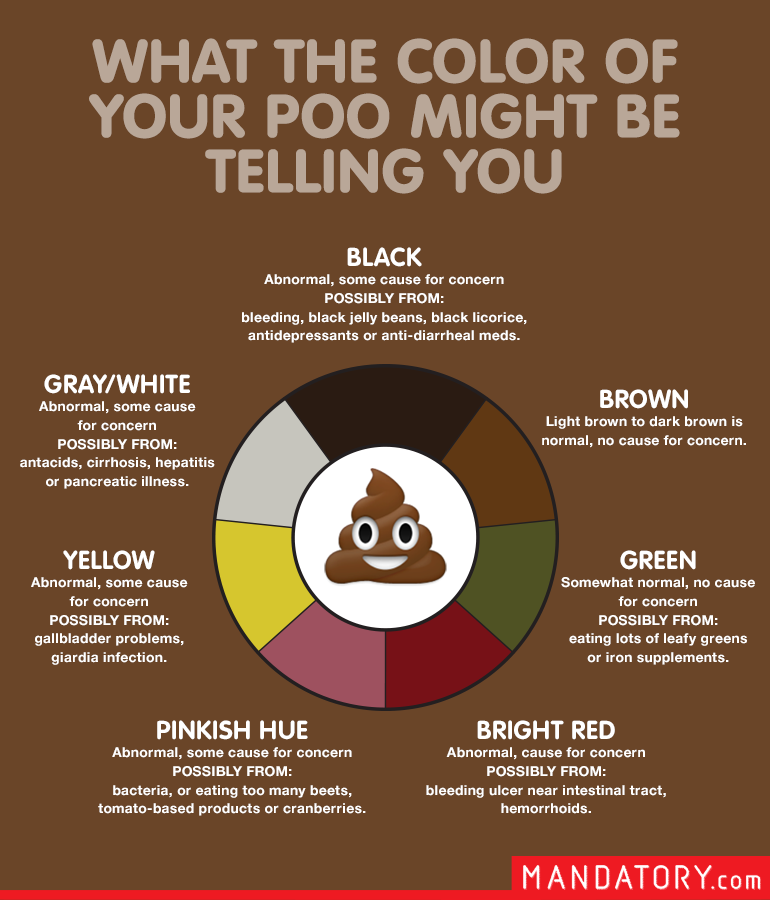 If you have the condition and eat foods that have gluten, like many breads, pastas, and cookies, your intestines won’t work as they should. So, if you’re eating those foods, and your poop is yellow, it may be time to see a doctor.
If you have the condition and eat foods that have gluten, like many breads, pastas, and cookies, your intestines won’t work as they should. So, if you’re eating those foods, and your poop is yellow, it may be time to see a doctor.
Other causes of yellow poop
There may be other causes of yellow poop that’s greasy and smelly. If it happens to you often, tell your doctor.
Sometimes, poop may not have much color at all.
Is your diet causing pale poop?
If your poop is pale, it’s not likely directly due to a food. But medicines for diarrhea like bismuth subsalicylate (Kaopectate, Pepto-Bismol) can sometimes cause pale or clay-colored poop. So can barium, a chalky liquid you drink before you get X-rays of the upper part of your digestive tract.
Other causes of pale poop
A more serious cause is a lack of bile in your stool. (Remember, bile gives poop its brown color.) Your body makes bile in the liver, stores it in the gallbladder, and releases it into your small intestine to help digest your food. If there’s not enough of it to give your poop its typical brown color, it could be a sign of a problem along the way.
If there’s not enough of it to give your poop its typical brown color, it could be a sign of a problem along the way.
Liver disease, such as hepatitis, can keep bile from getting into your body waste. So can a blockage in the tubes (called ducts) that carry bile. This can happen because of:
- Gallstones
- A tumor
- A condition you’re born with called biliary atresia
Babies’ poop is black for the first few days after they’re born. Otherwise, it may be because you ate something very dark-colored or took a medicine or supplement that causes black poop. But this color can be a sign of a more serious problem: bleeding in the upper part of your digestive tract.
Is your diet causing black poop?
Foods and supplements that turn poop black include:
- Black licorice
- Blueberries
- Iron supplements
Medicines that have bismuth subsalicylate (Kaopectate, Pepto-Bismol) can also cause very dark stools.
Other causes of black poop
Poop that looks like tar is often a sign of bleeding in the digestive tract. Some causes include:
- Bleeding from stomach ulcers
- Bleeding sores in your esophagus from acid reflux
- Bleeding from noncancerous tumors in the upper GI tract
- Cancer
If you don’t think black poop came from what you ate, you need to talk to your doctor.
If you see red or reddish poop in the toilet, don’t be alarmed right away. First ask yourself if you’ve had red foods lately.
Is your diet causing red or reddish poop?
Several foods can change the color of your stool to a pink or reddish color:
- Beets
- Tomato soup
- Gelatin dessert
- Red drinks
Other causes of red or reddish poop
If you don’t think your diet is the cause, the red you see may be blood. And if it’s bright red, the blood likely comes from the lower part of your digestive tract. Common causes include:
Common causes include:
- Noncancerous tumors
- Cancer
- Inflammation in the colon, called colitis
- Growths called polyps in your colon
- Conditions caused by small sacs in the wall of the colon, called diverticular disease
- Hemorrhoids
Call your doctor if you see red that’s probably not from food you ate.
Poop can often come out the color of the food that went in, especially if you have diarrhea. If your poop has an orange hue, it’s most likely due to some orange foods.
Is your diet causing orange poop?
Foods that have beta-carotene can turn your poop orange, such as:
- Carrots
- Winter squash
- Pumpkin
- Sweet potatoes
Foods with orange coloring, such as sodas, candy, or gelatin dessert, can also give your poop an orange color.
Also, antibiotics and antacids that have aluminum hydroxide in them can make your stool orange.
Other causes of orange poop
Rarely, poop can be orange if you have a problem with your liver that causes it to make less bile than normal, or a blockage that keeps bile from leaving the liver and entering your system.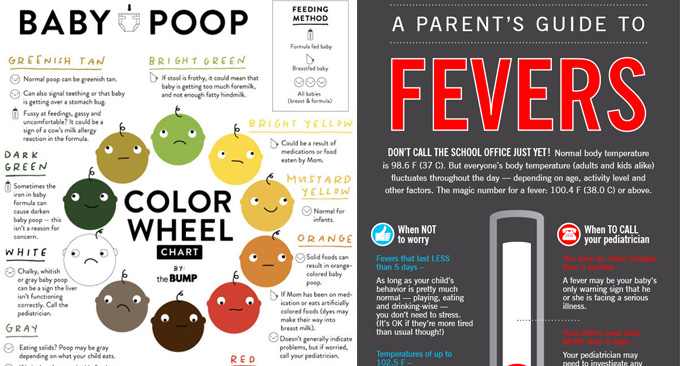 But usually, if this is the case, your poop will be pale or clay-colored.
But usually, if this is the case, your poop will be pale or clay-colored.
Most of the time, poop that’s a different color from what you’re used to isn’t something to worry about. It’s rare for it to be a sign of a serious condition in your digestive system. But if it’s white, bright red, or black, and you don’t think it’s from something you ate, call your doctor.
Top Picks
What does dark stool mean?
- Main page
beauty
Health
Contents
- Cal.
 normal color
normal color - Why does feces turn black?
A person who monitors the state of his body often pays attention to the color of urine and feces. It is these secretions that can become indicators of the changes taking place in it. For example, sometimes the question may arise: what does dark-colored feces mean? Let’s try to find an answer to it.
Cal. Normal color
Discoloration of stool can occur for various reasons. In humans, feces that are yellowish-brown to dark brown are considered normal. One of the most common reasons for its darkening is certain foods, as well as the level of bile content. For example, as a result of a violation of the outflow of bile, stool becomes light in color.
Why does stool turn black?
The appearance of black stool, as a rule, causes anxiety in a person and a desire to know the reason for such changes. There are a number of reasons why stool color may change.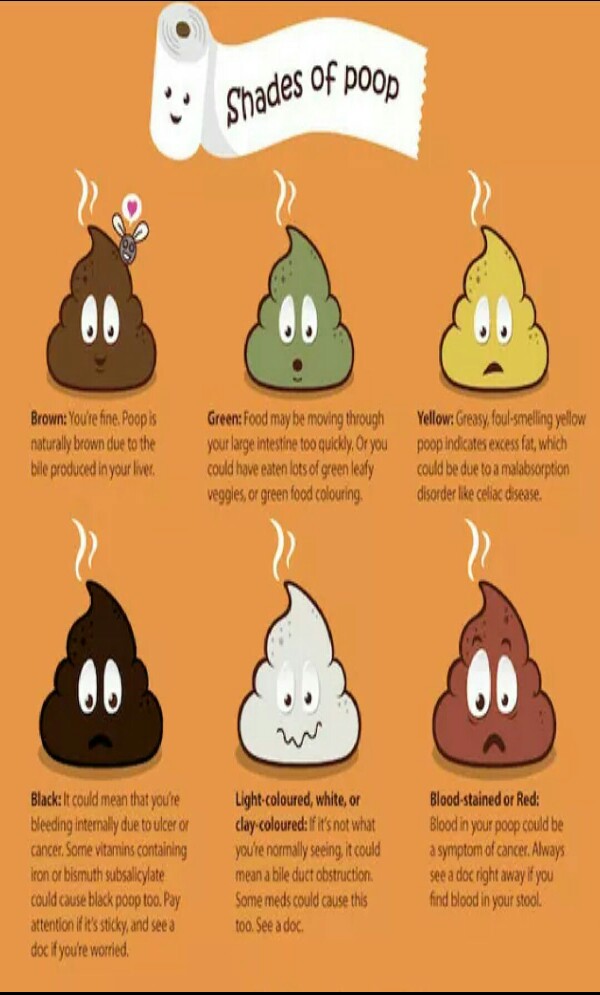
- Eating “colored” foods that cause staining of feces (and such changes can be observed within 3 days). These products include:
prunes
beets
red grapes
black pudding.
If you have consumed any of the above on the eve of the appearance of black feces, you must exclude them from the diet for 4-5 days. If after that the feces remain black, then the reason lies elsewhere.
- This type of change may occur with certain medications. These are iron-containing agents (Sorbifer, Ferrum Lek, Aktiferrin, Maltofer and others), taking activated black carbon and bismuth preparations.
If a change in the color of the feces occurs while taking these drugs, then this is not a contraindication. Consultation with your doctor will help dispel all doubts.
- The appearance of dark stools may be a sign of bleeding in the esophagus, stomach ulcers, stomach cancer, etc. Black feces are called “melena”.
It is important to know that the presence of serious internal pathologies can be indicated not only by the dark color of the stool, but also by the appearance of pain in the epigastric region, weakness, nausea, and vomiting.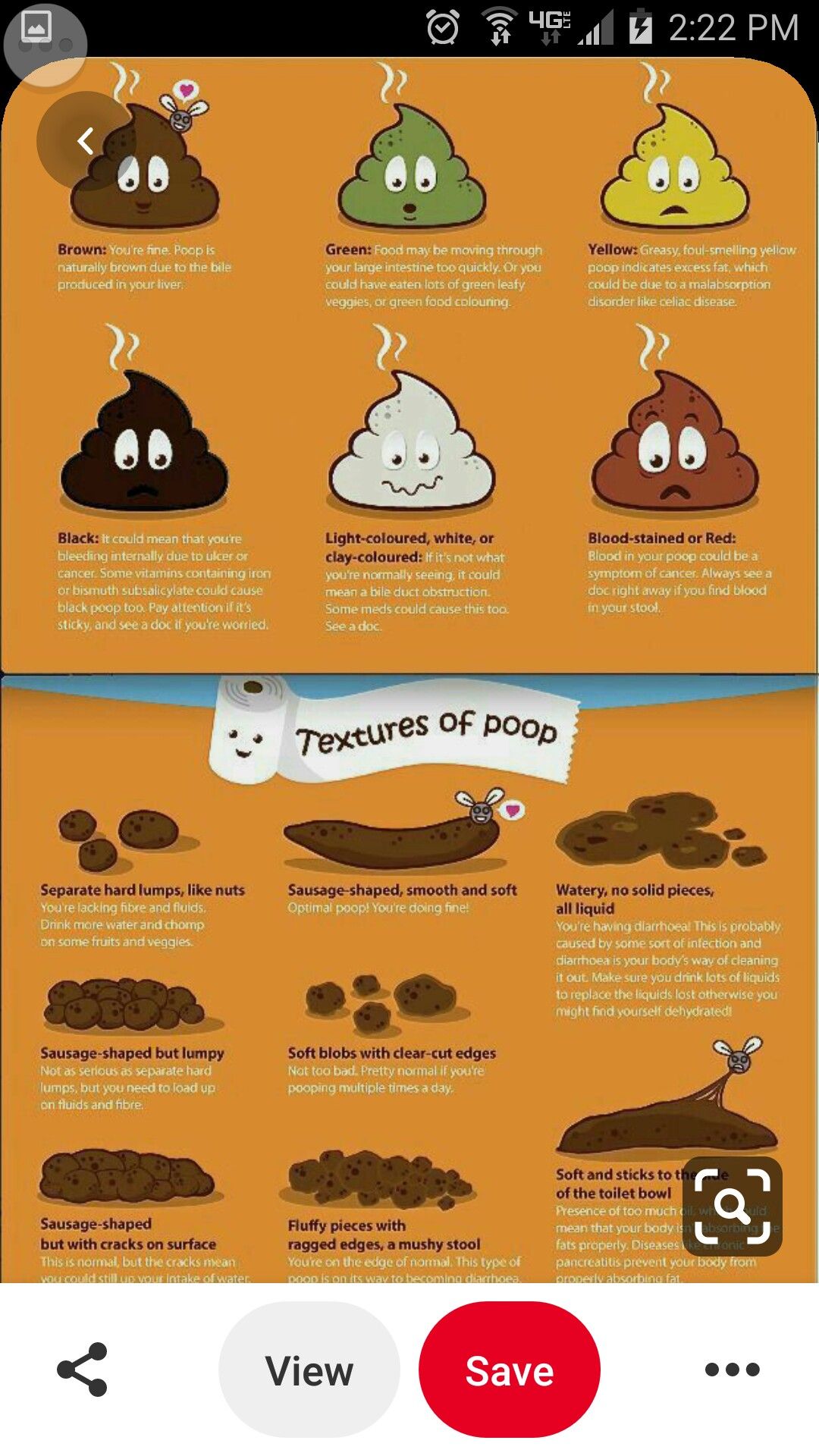
One more nuance should be noted. The cause of bleeding in people suffering from duodenal ulcers or stomach ulcers may be antiplatelet agents (aspirin, cardiomagnyl) and non-steroidal anti-inflammatory drugs. The drugs themselves do not turn the stool black, but they can cause bleeding that will turn the stool black.
If you have dark stools for several days (it is necessary to exclude the reason for taking colored products), you should consult a doctor and take tests.
Tags:
- cal
- color
What color is menstrual flow in a healthy girl?
What color is menstruation?
It is difficult to give an unambiguous answer to the question of what color menstruation should be. The shade of menstrual blood can be very different. And it’s not just the individual characteristics of each organism. Often the color changes even during one menstruation. The discharge is usually red, brown, or dark brown. Their shade depends on hormonal fluctuations and other factors related to women’s health. Let’s take a closer look at what normal periods can be.
Their shade depends on hormonal fluctuations and other factors related to women’s health. Let’s take a closer look at what normal periods can be.
What is the color of the first period?
Many girls who have just entered puberty are interested in what color their period is and how to find out what it is. Menstruation usually begins for the first time between the ages of 9 and 15. 1 The color of the first menses is normally reddish or brownish. Usually the discharge is not too intense, so you may only notice a few dark spots on your underwear.
What color is the discharge on the first and subsequent days of menstruation?
Normal periods usually last 3-5 days. During this time, the color of menstrual flow can change significantly. Don’t worry! In most cases, this is completely normal.
On the first day. At the onset of menstruation, many girls and adult women develop a characteristic dark, thick discharge in the form of smears. This is due to the fact that the discharge of an unfertilized egg during menstruation does not occur immediately, but gradually. As a rule, dark discharge lasts no more than a day.
This is due to the fact that the discharge of an unfertilized egg during menstruation does not occur immediately, but gradually. As a rule, dark discharge lasts no more than a day.
In the middle of menses. Usually the color of blood during menstruation is red. The shade can vary from quite bright to dark. Often the color depends on the amount of blood lost. With scanty monthly discharge, it is often dark, with abundant – red or burgundy. They may contain mucus and small clots. Bright scarlet menstrual blood in the first 1-3 days (but not longer!) Is also considered normal.
In the last days of menstruation. By the fourth day of menstruation, the discharge should become darker and thicker. At the end of menstruation, within 3 days, you may notice the appearance of brown smears on the underwear. So the uterus is completely cleared of all “unnecessary”. During this period, you can use panty liners such as Carefree®.
Why does my menstrual flow change color?
The color changes because the discharge is a combination of menstrual blood, vaginal secretions and flaking uterine lining (those are the same clots that you might notice when changing hygiene products). On different days of menstruation, their composition and consistency are not the same. As you already know, on the very first and last days, the color of normal periods is dark, the rest of the time it is red or brownish. The reason for the change in the color of menstrual flow can be hormonal fluctuations, oral contraceptives, stress, hypothermia, pregnancy, various diseases.
On different days of menstruation, their composition and consistency are not the same. As you already know, on the very first and last days, the color of normal periods is dark, the rest of the time it is red or brownish. The reason for the change in the color of menstrual flow can be hormonal fluctuations, oral contraceptives, stress, hypothermia, pregnancy, various diseases.
When should a change in the color of your period alert you?
The color of menstrual blood should not change suddenly from cycle to cycle. For example, if you usually have enough red discharge, and now during your period they have become unexpectedly dark, almost black, this is an occasion to at least take a closer look at your well-being. You should be especially alert to a sudden change in the color or consistency of your menstrual flow that coincides with the onset of other symptoms, such as:
- increase or decrease in the duration of the menstrual cycle;
- the appearance of severe pain in the lower abdomen;
- frequent and/or uncomfortable urination;
- itching and burning in the perineum;
- the acquisition of secretions of an unpleasant putrid odor.

Any of the above signs may indicate inflammatory diseases of the female reproductive system, so they should not be ignored. In addition, you should be alerted to “unscheduled” discharge in the middle of the cycle, even if they are similar to your regular periods. It does not matter what color they are – brown or bright scarlet – in this case, you must definitely go to the doctor. 2
If you feel that the color of your menstrual blood has suddenly changed and you are worried about it, you should consult a gynecologist. The doctor will listen to your complaints, conduct an examination and, if necessary, prescribe an additional examination.
Literature
- Nikitina I.L., Bairamov A.A., Khoduleva Yu.N. and others
Kisspeptins in the physiology and pathology of sexual development – new diagnostic and therapeutic possibilities V.A. Almazov» of the Ministry of Health of the Russian Federation, St. Petersburg
Reviews of clinical pharmacology and drug therapy.

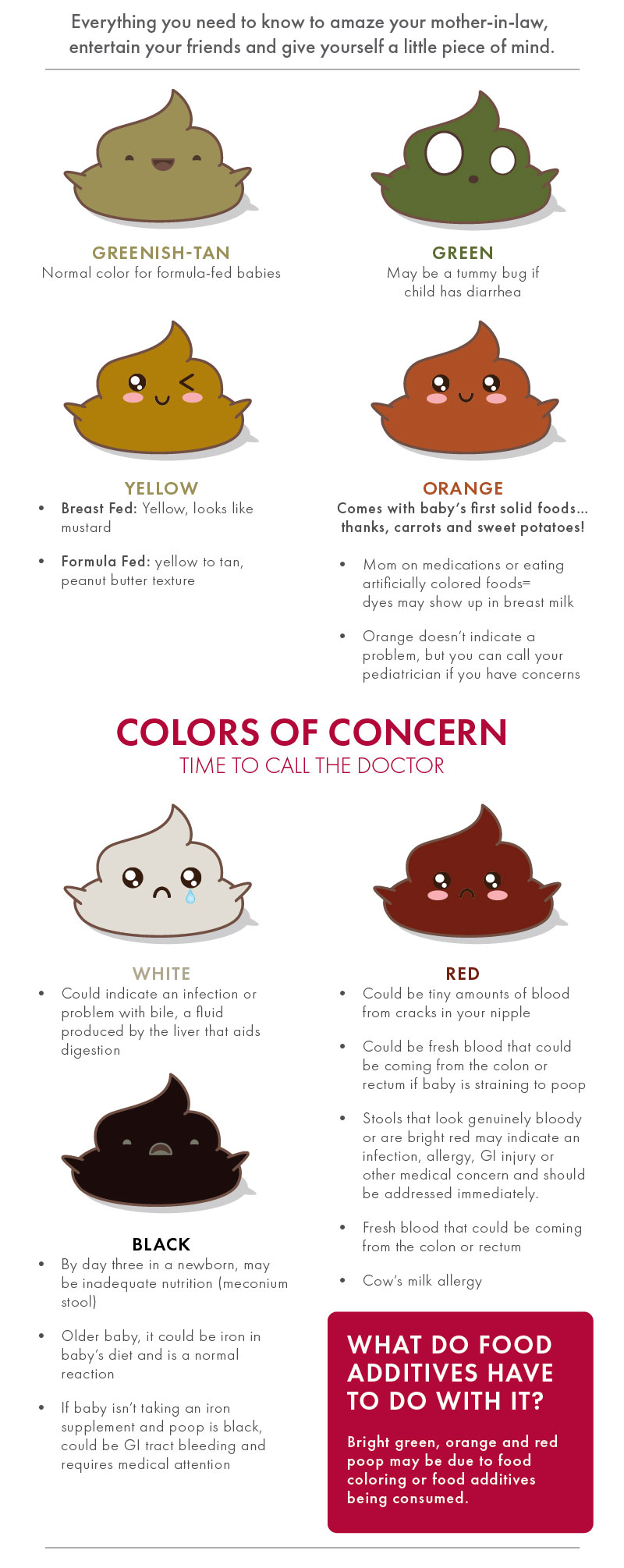 normal color
normal color
